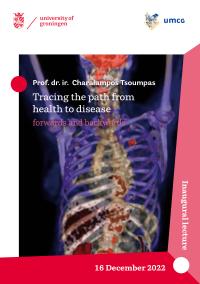Tracing the path from health to disease: forwards and backwards
Synopsis
Positron Emission Tomography (PET) is currently underutilised and can provide even more valuable information. PET is not merely an imaging device, but a measurement device. It measures molecules and their concentration inside a living subject. And as by definition life is not a static process, PET measures how molecules travel inside our bodies and provides a direct way to measure the kinetics of biochemical reactions.
There are more technological developments needed to enable dynamic imaging and kinetics in clinical practice for a range of radioactive molecules. Furthermore, quantification of biological processes using PET has several challenges related to imaging a living subject including the effects of ionising radiation. Can we minimise the radiation dose per scan which will then make it easier to justify scanning a person with multiple radioactive molecules?
For example, imaging multiple molecules simultaneously will allow to evaluate pixel-by-pixel the potential performance of drugs and swiftly decide how to proceed with treatments. In addition, it can help measuring the potential crosstalk of diseases such as cancer and cardiovascular diseases, or of different organs such as brain and heart, or gut and brain axes.
But more research is necessary to allow imaging two or more radioactive molecules simultaneously. Advancing PET technology can empower medicine by tracing several molecular pathways and interactions from human health to disease – forwards and backwards – and has a lot to offer for detecting and understanding disease processes and optimising precision medicine.
Design and layout: LINE UP boek en media bv | Riëtte van Zwol, Mirjam Kroondijk
Cover photo: Riemer Slart
Author photo: Phil L. Faulks
Photo: Jeroen Koeten
Illustration: Jens Maus, PET-schema.png, 1st April 2003, Wikimedia. Public Domain.
Published by University of Groningen Press
Broerstraat 4
9712 CP Groningen
https://ugp.rug.nl/
Downloads
Total downloads: 98

Downloads
Published
Series
Categories
License

This work is licensed under a Creative Commons Attribution-NonCommercial-NoDerivatives 4.0 International License.



